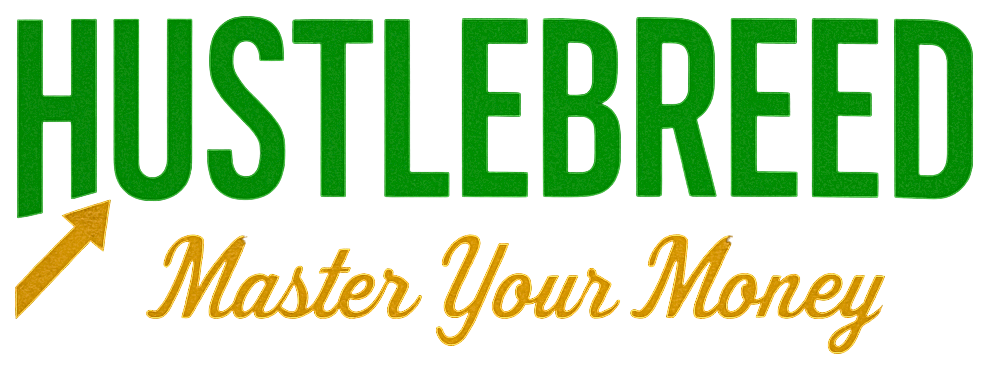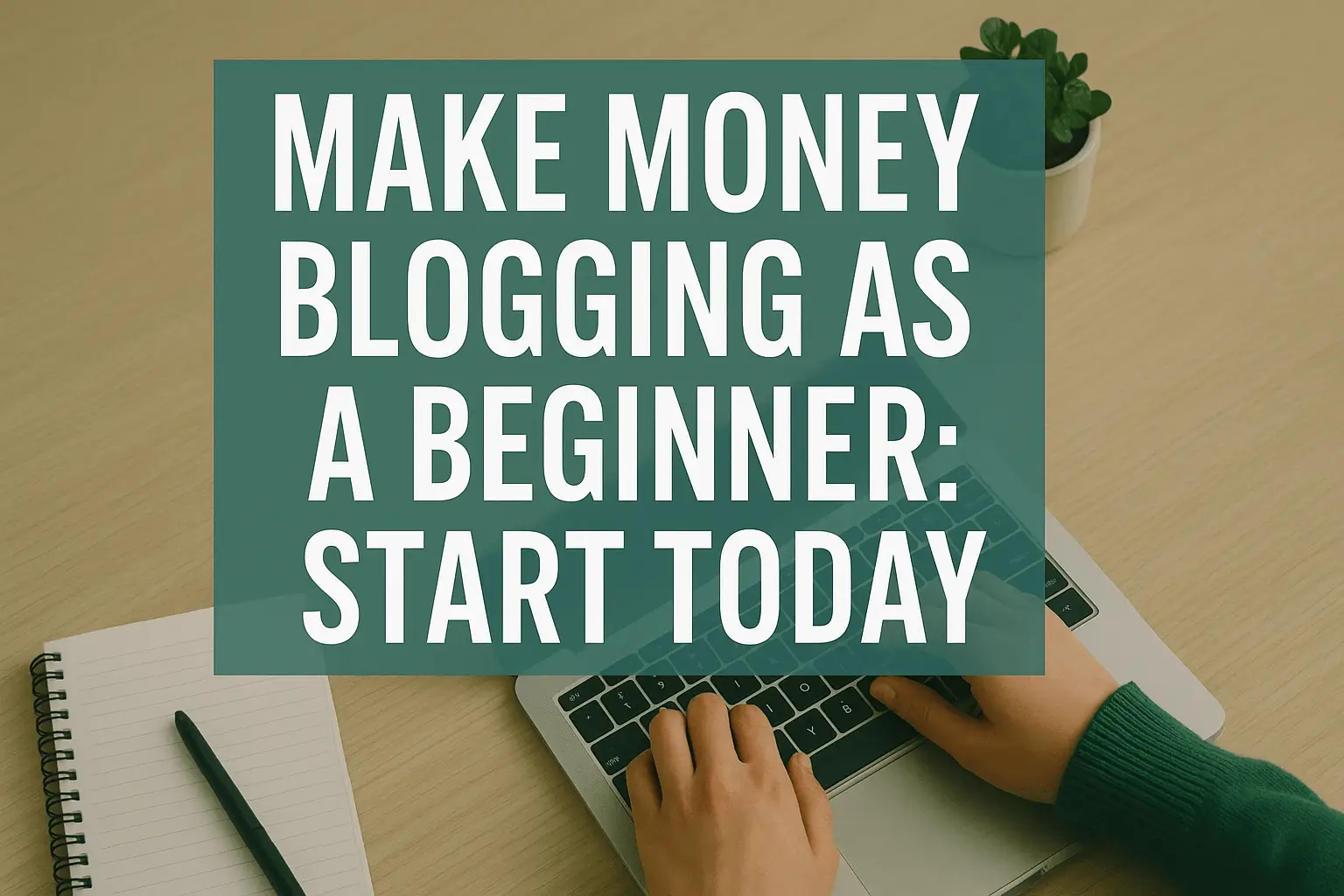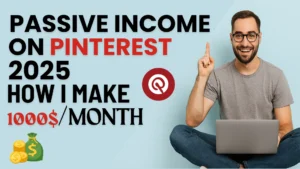How to make money blogging for beginners
One of the most effective ways to make money online these days is through blogging, and the best part is that you don’t need years of experience to get started. Many people believe that only professionals can make money from blogging, but with the correct techniques, even total novices can create a successful blog. The secret to making money from blogging as a beginner is to pick a lucrative niche, produce worthwhile content, and develop a loyal following.
Blogging allows you more freedom than traditional jobs because you can write about subjects you are passionate about, reach a global audience, and make money from your blog in a variety of ways. There are countless options, ranging from sponsored posts and digital products to affiliate marketing and display ads. Even novices can turn their blogs into long-term revenue streams with perseverance, consistency, and SEO-driven tactics. Let’s get started on your blogging journey with a comprehensive, step-by-step guide.
How much money Bloggers can make?
“How much can I make money blogging as beginner?” is one of the most frequently asked questions by newbies. The answer is contingent upon your blogging income strategies, traffic, and niche. Most novices earn little to nothing in the beginning, typically between $100 and $500 a month from advertisements or basic affiliate schemes. Within one to three years, earnings can increase to $1,000 to $5,000 per month with consistency and the right beginner’s blog advice.
Skilled bloggers who successfully generate revenue from their blogs through a variety of sources, including digital goods, sponsored content, and affiliate marketing, frequently make between $5,000 and $20,000+ a month. Six-figure monthly incomes can be earned by top authority bloggers in competitive niches.
The main conclusion is that anyone can make money from blogging, but perseverance, regular publishing, and astute monetization strategies are necessary for success. Although blogging is not a quick-money-making plan, it can become a steady source of income with time and effort.
1: Display Advertising: A Beginner-Friendly Way to Monetize your blog
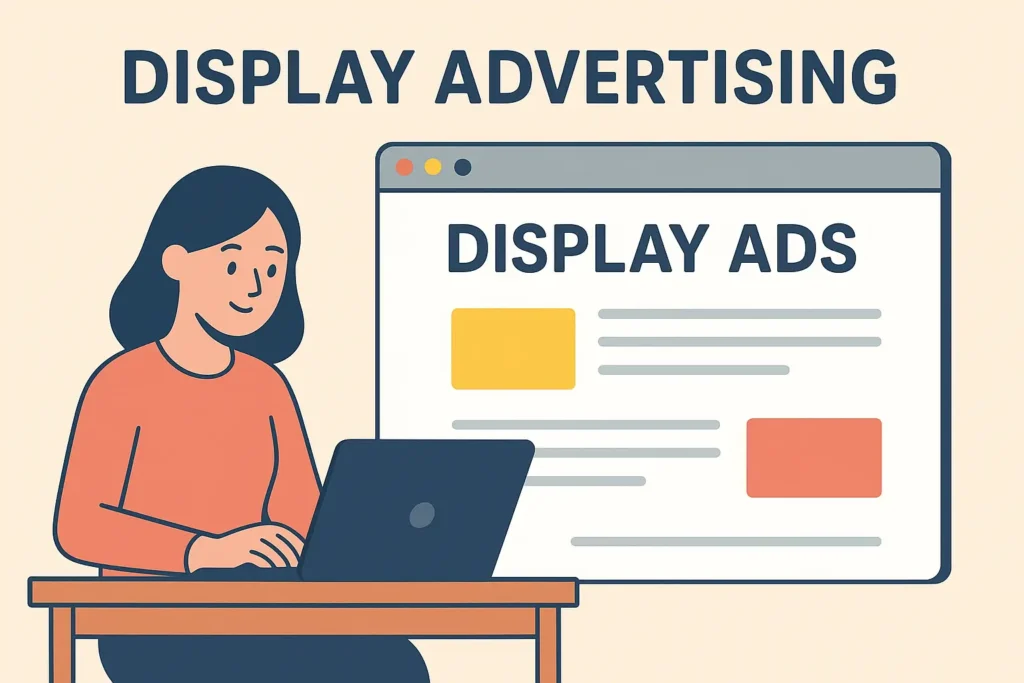
Display advertising is one of the simplest and most popular ways to monetize your blog. Simply put, display ads are the in-content or banner-style ads you see on websites. They let bloggers make money from their blogs each time a reader views or clicks on the ad. After a blogger is approved, advertisements start to show up on the website automatically through ad networks that link publishers and advertisers. Due to its low entry requirements, Google AdSense is the most popular option for new bloggers. In contrast, more established blogs frequently switch to premium networks like Ezoic, Mediavine, or AdThrive in order to receive higher payouts.
Traffic, audience location, and niche all have a significant impact on display advertising earnings.
While a blog accepted into Mediavine with 50,000+ sessions could earn $1,000 to $3,000 or more per month, a novice blog with 10,000+ monthly visitors might only make $20 to $100 with AdSense. Profitable niches like technology, health, or finance frequently have high-authority blogs that make well over $10,000 a month from advertising alone. Because revenue naturally rises with traffic, display advertising is one of the most scalable blogging income strategies.
Display advertisements’ primary benefit is that they offer a dependable, low-effort passive income stream. Once you set them up, you can focus on creating content while the ads work in the background. However, novices should be mindful of the following drawbacks:
Since significant traffic is required before earnings become significant, initial revenue is typically modest.
- An excessive number of advertisements can cause your site to load slowly and degrade user experience.
- Ad rates (RPM) for profitable niches like tech and finance are typically higher than those for lifestyle or hobby blogs.
- Before depending on advertisements as their primary source of revenue, bloggers should prioritize generating steady traffic through high-quality content and SEO in order to optimize outcomes. A clever strategy is:
- When traffic is light, start with AdSense.
- As your sessions expand, switch to Mediavine or Ezoic.
- Balance ad placement so that ads generate revenue without overwhelming readers.
With patience and steady traffic growth, display advertising can become one of the most dependable ways to earn from blogging.
2: Sponsored Posts and Brand Collaborations
Sponsored posts and brand partnerships are two more effective ways for new bloggers to earn money. Under this model, businesses compensate bloggers to produce content that highlights their goods or services. Sponsored content is a direct collaboration between the brand and the blogger, as opposed to automated display advertising. This makes it more personalized, often resulting in higher payouts and long-term relationships.
Product reviews, how-tos, listicles, and even social media shoutouts that link to your blog are examples of sponsored posts. Because blogs provide authentic voices and targeted audiences that traditional advertisements frequently lack, brands are willing to pay for them. For example, a fitness blogger might collaborate with a sportswear company, or a finance blogger could partner with an investment platform. These collaborations help you establish authority and credibility in your niche in addition to generating revenue.
The earning potential from sponsored posts depends on your niche, audience engagement, and traffic. Beginner bloggers may earn $50 to $200 per sponsored post, while established bloggers with strong domain authority and large followings can charge anywhere from $500 to $5,000 per post. Some collaborations even turn into ongoing monthly retainers, creating a steady stream of blogging income.
The main benefit is that, for the same amount of traffic, sponsored collaborations typically pay significantly more than display ads. But there are also difficulties. By being open and honest about collaborations and only endorsing goods you truly believe in, you can keep your audience’s trust. Putting too many sponsored advertisements on your blog can make it appear unauthentic and harm your brand.
When working with sponsored posts, keep the following points in mind:
- Begin modestly by contacting brands directly or by signing up for influencer networks such as Blog Meets Brand, TapInfluence, or AspireIQ.
- Determine reasonable prices by looking at your engagement, traffic, and niche metrics.
- To preserve credibility and adhere to advertising regulations, make sponsorships obvious.
- Select partnerships that are pertinent to your blog’s values and readership.
One of the most profitable ways to monetize your blog is through sponsored posts and brand partnerships, which can give you authority in your niche and money.
3: Affiliate Marketing
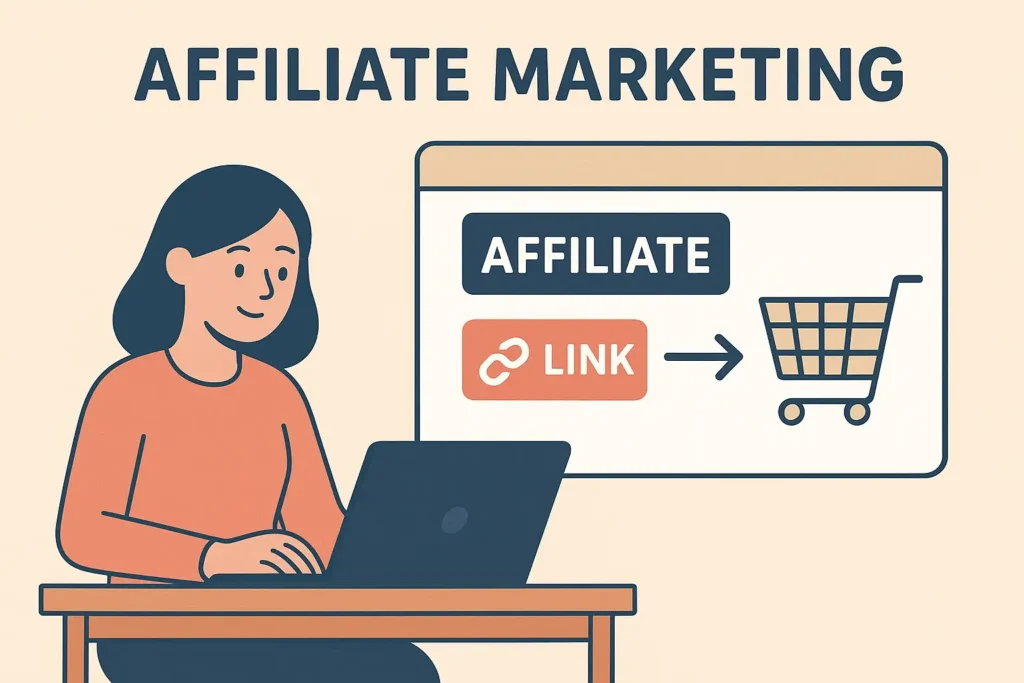
One of the most well-liked and approachable ways to monetize your blog is through affiliate marketing. According to this model, you use a special affiliate link to advertise a business’s goods or services, and you get paid each time a reader uses that link to make a purchase. Affiliate marketing is performance-based, as opposed to display advertising, so your revenue increases as your audience follows your advice.
Because blogging inherently fosters trust, this tactic is most effective. When a blogger they frequently follow recommends something, readers are more likely to purchase it. A food blogger might post links to kitchenware, whereas a tech blogger might advertise software tools.
The commissions vary greatly; some affiliate programs pay as little as 5% per sale, while others, particularly in the finance or digital products niches, can pay between 30% and 70%. Because of this, affiliate marketing is among the best long-term blogging monetization techniques.
Content strategy, niche profitability, and traffic quality all affect earning potential. While well-established blogs in profitable niches can make thousands of dollars a month through affiliate links, a novice blog might only make $50 to $200. Successful affiliate marketers frequently base their entire content strategy on in-depth guides, tutorials, and product comparisons that increase conversions.
Scalability is affiliate marketing’s greatest benefit. Writing an article with affiliate links can result in months or even years of passive income. It’s not without difficulties, though. Because certain niches are highly competitive, promoting irrelevant products solely for commission can erode audience trust. Authenticity is a key component of successful affiliate marketing, and they select programs that actually help their readers.
A few key points for novices are as follows:
- Become a member of reliable networks such as Impact, CJ Affiliate, ShareASale, and Amazon Associates.
- Write informative articles that inherently contain affiliate links, like reviews, tutorials, or comparison guides.
- For higher returns, concentrate on lucrative niches like online education, software, or finance.
- Test various call-to-actions and placements to monitor and improve performance.
Building trust and producing content that addresses readers’ issues are more important goals of affiliate marketing than chasing after quick profits. When done correctly, it can rank among the most reliable and expandable methods for novice blog monetization.
4: Memberships and online courses
Making and selling online courses or membership programs is one of the best ways to monetize your blog as a novice, especially after you’ve established some credibility in your field. In contrast to affiliate marketing or display ads, which rely on outside parties, online courses let you profit directly from your expertise. You already have the groundwork to transform your expertise into organized learning content if you have been writing blog entries that address issues.
Online courses can be written lessons, live workshops, video tutorials, or even a mix of all three. Because their audiences are eager to learn step-by-step techniques, bloggers in niches like finance, health, business, or personal development frequently experience enormous success.
While more seasoned bloggers can offer in-depth programs for $200–$1,000 or more, a novice blogger might begin with a quick, inexpensive course that costs $20–$50.
In contrast, membership programs generate a steady flow of monthly revenue. Readers pay a subscription fee for ongoing access to premium content, resources, or community support rather than making a single purchase. A food blogger might start a private recipe club, for instance, and a blogger who focuses on digital marketing might host weekly strategy meetings. In addition to generating steady revenue, this recurring model cultivates a devoted following for your company.
Compared to advertisements or affiliate links, the earning potential for courses and memberships is substantially higher. Planning, developing, and promoting your course or membership, however, takes more work up front. Nevertheless, the system can be a powerful source of passive income once it is established.
Important things to remember:
- Before starting a full program, start small with a mini-course.
- For simple hosting, pick a platform such as Teachable, Thinkific, Kajabi, or Podia.
- Provide memberships with benefits like downloadable materials, live Q&As, or access to exclusive content.
- To turn devoted readers into paying students, advertise on your blog and email list.
Beyond page views and clicks, you can create a steady, high-value revenue stream from your expertise by encapsulating it in online courses or memberships.
5: Sell Digital Products
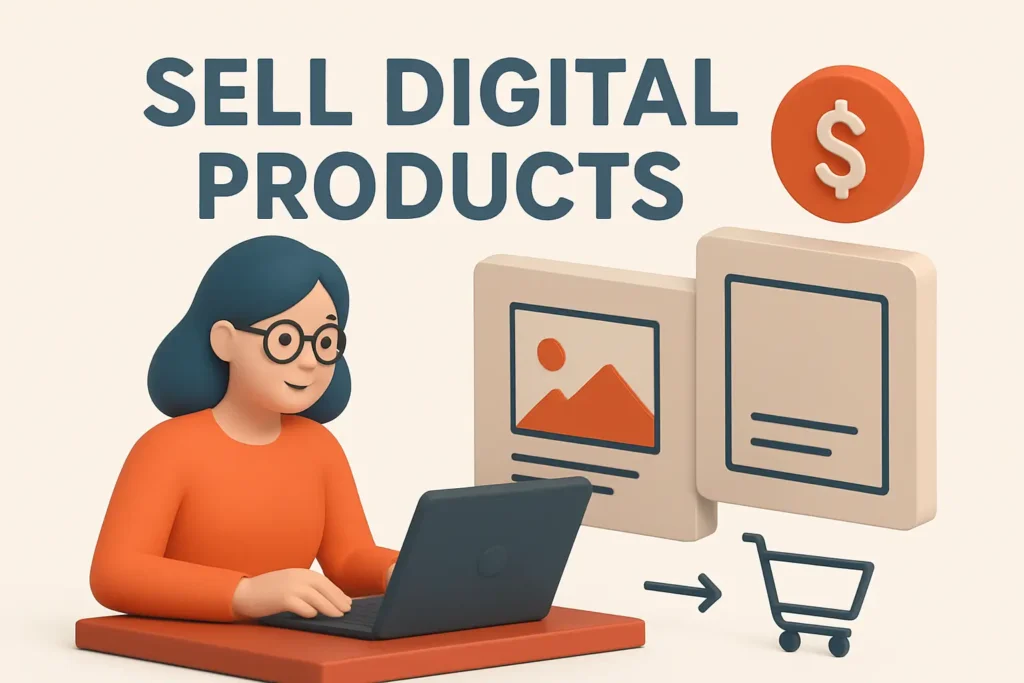
Since you can create something once and sell it repeatedly for virtually nothing more, selling digital products is one of the best ways for beginners to earn money from blogging. Digital goods don’t need to be stored, shipped, or inventoried like physical goods do. Because of this, they are very lucrative and easy for beginners to use, particularly for bloggers who already have content and a loyal following.
Depending on your niche, digital products can take many different forms. For instance, a lifestyle blogger might produce digital art or printable planners, a fitness blogger might provide workout plans, and a finance blogger might sell spreadsheets for budgeting. Other well-liked options that provide readers with value without requiring significant upfront expenditures are e-books, templates, checklists, stock photos, and audio files.
Scalability is a huge benefit of selling digital goods. A product can produce passive income for months or even years after it is created. If properly promoted, even a $10 ebook could eventually generate hundreds or even thousands of dollars. Many well-known bloggers eventually create digital products, such as comprehensive manuals or toolkits, from their most well-liked posts.
However, your ability to comprehend the needs of your audience is crucial to the success of digital products. Products that make life easier, save time, or solve particular problems typically sell better than generic or general goods. Pricing is also important; start small with reasonably priced goods and work your way up to more expensive options as your blog gains popularity.
Here are some crucial things to think about:
- Determine the problems that your readers are facing and develop digital solutions to address them.
- Before advancing to more complex products, start with simpler ones like printables, templates, or e-books.
- For simple selling and delivery, use websites like SendOwl, Etsy, or Gumroad.
- Increase conversion rates by promoting on your email list and blog.
- To boost value and sales, bundle products (e.g., ebook + template pack).
One of the most sustainable blog monetization strategies is the sale of digital goods, which gives you complete control over branding, pricing, and client interactions. For any novice blogger, it can quickly turn into a reliable source of income with the correct products and promotion.
6: Email Marketing
Email marketing is frequently referred to as the foundation of online business, and with good reason—it’s among the most dependable ways for new bloggers to earn money. Your email list is entirely yours, even though search engines and social media sites are always changing their algorithms. This makes it an effective tool for fostering relationships, establishing trust, and producing steady income.
You can communicate with your readers directly through email marketing and provide them with exclusive deals, tailored recommendations, and insightful content. Emails allow you to communicate with your audience directly, unlike affiliate links or display ads that are strewn throughout your blog. Email newsletters, for instance, can be used to advertise your most recent blog entries, suggest affiliate goods, and introduce your own digital goods.
Conversion is the greatest benefit. Readers who sign up for your list are already interested in your niche, making them far more likely to purchase compared to random visitors. If you regularly offer value and suggest products that address actual issues, even a small email list of 500–1,000 active subscribers can yield a sizable income.
Campaign automation, audience segmentation, and performance tracking are made simple with email marketing tools such as ConvertKit, Mailchimp, or AWeber. In order to get subscribers, beginners frequently begin with a free lead magnet, such as a checklist, mini ebook, or template. Before presenting paid offers, they can then use routine emails to nurture leads.
Important things for novices to keep in mind:
- Use free lead magnets that address reader issues to grow your list early.
- To send offers that are relevant to your audience, divide them up according to their interests.
- Campaigns should be automated for steady engagement and revenue.
- Use emails to directly promote courses, digital goods, or affiliate products.
- Prioritize value because sales are a result of trust that is developed through useful advice and insights.
One of the most reliable and scalable blogging revenue streams is email marketing, when done right. It not only aids in revenue generation but also fosters enduring bonds with your audience.
7: Freelance Writing And Services
One of the quickest ways to start earning money from blogging as a beginner is to offer your services and write freelance, especially if you don’t yet have a sizable following. Freelancing enables you to generate active income by utilizing the abilities you already possess for blogging, such as writing, editing, designing, or marketing, whereas passive income streams like affiliate marketing and advertisements require time to develop.
Quality writers who can produce blog posts, web content, copywriting, or social media content are in high demand by numerous businesses, brands, and even other bloggers. In addition to writing, bloggers can start providing other services like website development, social media strategy, Pinterest management, SEO consulting, and graphic design. There is a growing need for qualified independent contractors, and websites like Upwork, Fiverr, and Freelancer offer chances to meet with potential customers. However, making direct pitches to companies in your niche frequently leads to longer-term, higher-paying jobs.
Your niche and skill set will determine how much money you can make freelancing. Experienced bloggers in specialized niches like technology, health, or finance can make $100 to $500+ per post, while beginning freelance writers typically start at $20 to $50 per article. Earnings can increase even further with services like coaching or consulting.
that draws clients by showcasing your expertise on your own blog. A few well-written articles in your niche can act as writing samples to help you get paid gigs if your blog is new.
Key information for novices:
- Showcase your writing or services by using your blog as a portfolio.
- To gain credibility more quickly, offer your services as a freelance writer in your field.
- Extend services (coaching, design, social media management, SEO).
- Use websites such as LinkedIn, Fiverr, or Upwork to locate clients.
- Directly approach companies to offer them higher-paying contracts.
Even though freelance writing and services aren’t entirely passive, they can help you establish credibility in your field and generate quick cash. A lot of bloggers use freelancing as a springboard, making money up front while developing their blog into a long-term enterprise.
8: Sell Physical Products or Merch
Another effective strategy for earning money as a beginner blogger is to sell tangible goods or branded merchandise, particularly if you already have a loyal following that enjoys your posts. Physical products, as opposed to digital ones, provide your readers with something material to hold onto, enhancing brand loyalty and generating extra income.
For instance, fitness and lifestyle bloggers frequently market branded apparel, water bottles, and exercise gear. Food bloggers may sell recipe kits, cookbooks, or kitchenware. Journals, planners, tote bags, mugs, and stickers with their brand identity can be introduced by bloggers in creative niches like art, travel, or personal development.
Beginner bloggers no longer have to worry about shipping or inventory management because of print-on-demand services like Redbubble, Teespring, and Printful. All you need to do is create your product, link it to your website or online store, and the fulfillment service will handle the rest. Bloggers can also sell directly to their audience by using platforms like Shopify or Etsy for more customized products.
Physical products can greatly increase your blog’s credibility and forge a closer connection with your community, even though they frequently take more work than digital ones. Designing products that appeal to your niche audience and fit with the theme of your blog is crucial for maximizing success.
Important lessons for novices:
- To cut down on upfront expenses and inventory risks, start with print-on-demand.
- To cater to your audience, sell products that are related to your niche (cookbooks, planners, exercise equipment, etc.).
- Make use of print-on-demand integrations or platforms such as Shopify and Etsy.
- Make use of your email list and blog to promote your goods.
- To increase urgency and sales, provide bundles or limited editions.
In addition to diversifying your revenue, selling tangible goods or merchandise makes your blog a well-known brand. It may eventually lead to more significant opportunities, such as joint ventures, wholesale agreements, and even the opening of your own online store.
9: Create A Paid Community
One of the most interesting ways to start earning money from blogging as a beginner is to create a paid community, which allows you to develop stronger relationships with your audience and generate recurring revenue. By providing members with exclusive value, a paid community enables you to consistently make monthly or annual revenue, in contrast to one-time sales from advertisements or affiliate links.
Depending on your niche, a paid community can take many different forms. Personal finance bloggers, for instance, may host private groups where participants can participate in live Q&A sessions, investment discussions, or budgeting advice. A members-only area for workout regimens, accountability tests, and one-on-one coaching could be created by health and fitness bloggers. Lifestyle or business bloggers frequently establish premium forums or mastermind groups where like-minded people can interact, exchange ideas,
A community thrives on interaction, which is the best part. Members actively interact with you and one another rather than merely passively reading your content, which fosters long-term retention and loyalty. Setting up a paid community without requiring extensive technical knowledge is made easy by platforms like Patreon, Facebook Groups (which offers subscription options), Discord, or tools like MemberPress and Circle.
Pricing should be kept low when first starting, between $5 and $25 a month, to encourage more readers to sign up. You can move up to premium tiers as your blog gains popularity, which include group masterminds, one-on-one coaching, and exclusive courses. Delivering value on a regular basis and giving members a sense of belonging are crucial.
Key takeaways for novices:
- Select the appropriate platform (Facebook Groups, MemberPress, Discord, or Pathoron).
- Provide member-only posts, templates, or live sessions as examples of exclusive content.
- Increase participation through challenges, networking opportunities, and Q&As.
- Start with low prices and work your way up to premium tiers.
- People pay for access, support, and networking, so emphasize the value of the community.
In addition to generating consistent revenue, a paid community enhances your reputation in your field. It turns infrequent readers into devoted followers who are prepared to spend money on your expertise, direction, and community assistance.
Conclusion:
Although starting a blog might seem overwhelming at first, with the correct approach, it can turn into a successful long-term revenue stream. The secret for a beginner is to concentrate on creating high-quality content, increasing consistent traffic via social media and SEO, and then making money using the appropriate strategies like sponsored posts, affiliate marketing, display advertising, and digital product sales.
Keep in mind that blogging is not a way to “get rich quick.” Beginners typically need six to twelve months to start earning money from blogging, but persistent work eventually pays off. You can gradually raise your income by picking a lucrative niche, producing useful content, and experimenting with various monetization techniques like paid communities, online courses, freelance services, and email marketing.
FAQs:
1. Does Blogging make money for beginners?
For novices, blogging can indeed generate income, but it typically requires patience and perseverance. As their traffic grows, new bloggers frequently begin making money through affiliate marketing, display ads, or freelancing. Although steady income usually develops after 6 to 12 months, beginners can begin making money within a few months with the correct niche, SEO, and monetization strategies.
2. How much money do beginner bloggers make?
After six to twelve months of blogging, beginner bloggers typically earn between $100 and $500 per month, depending on their niche, traffic, and content quality. Some start out with just a meager side income, but others who develop rapidly through marketing and SEO can reach $1,000+ a month in their first year.
3. How much money is 1,000 views on a blog?
The monetization strategy determines how much money is made from 1,000 blog views:
Display ads (Mediavine or AdSense): $2–$10 per 1,000 views (RPM).
$20 to $100 for every 1,000 views through affiliate marketing (if readers purchase products).
Digital Products/Services: Depending on your pricing, earnings can range from $50 to $200+.
In most niches, beginners can anticipate earning $5 to $10 per 1,000 views with just ads, but blogs about software, business, and finance frequently generate higher earnings.
4. What is the fastest way to make money blogging for beginners?
Offering freelance services (such as writing, design, or coaching) via their blog is the quickest way for newbies to start earning money from blogging. Once customers find you, services start making money right away, unlike affiliate marketing or advertisements, which take time to develop. Other quick ways include selling small digital products (such as checklists, templates, or eBooks) and promoting affiliate products. Prioritize email list building, Pinterest marketing, and SEO to quickly increase targeted traffic and results.
